

Steiner School Waboba Experiment
Originally Published in the Waboba Journal
Earlier this year, Noelle Frerichs, a physics teacher at Rudolf Steiner High School in Ann Arbor, Michigan, reached out to us about wanting to get her hands on Waboba Pro Balls for an upcoming classroom experiment she was doing. The experiment would involve throwing balls up in the air to calculate the height of each throw using knowledge of the speed of free fall. At first we offered to send Moon Balls since they bounce super high, but Noelle advised it was best to stick with the Waboba Pro balls to get the desired results. (Moon Balls would hit the ceiling in the gym, which would make it problematic for the calculation. Naturally.)
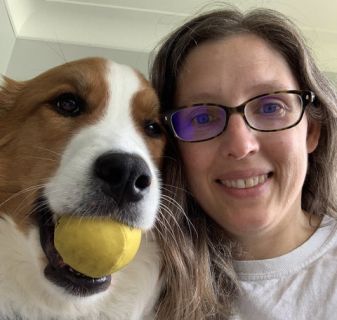 You see, Noelle was planning a series of labs for her 10th grade physics (mechanics) class, where the students discover the acceleration of objects in free fall and learn to calculate the speed and height of a projectile. She thought of the gel Waboba balls because her dog has the pet version - the Waboba Fetch (she has 4, a true furbobian). Noelle knew her students would feel safer trying to catch soft Waboba balls over a hard softball, and others would feel safe with balls flying over their heads too. Plus, they could do the experiment in the gym if needed, and the Pro balls would be heavy enough to get good height, minimizing the effect of air resistance, which would skew their results.
You see, Noelle was planning a series of labs for her 10th grade physics (mechanics) class, where the students discover the acceleration of objects in free fall and learn to calculate the speed and height of a projectile. She thought of the gel Waboba balls because her dog has the pet version - the Waboba Fetch (she has 4, a true furbobian). Noelle knew her students would feel safer trying to catch soft Waboba balls over a hard softball, and others would feel safe with balls flying over their heads too. Plus, they could do the experiment in the gym if needed, and the Pro balls would be heavy enough to get good height, minimizing the effect of air resistance, which would skew their results.
After we sent Noelle some Waboba Pro Balls on the house (we love our teachers), she kept us posted about the experiment and answered some of our other questions too. We hope Noelle's story inspires other teachers to bring Waboba into the classroom to keep life and learning fun!
When/how did you first discover Waboba?
I first discovered Waboba in a small outdoor equipment store in Northport, MI. They sold the Waboba balls that you can bounce across the water and I bought one for my kids, then I later bought the set for dogs. My dog loves that ball, and it’s the only ball she will play with and chase! It’s also the way we get her in the water in the summertime.
How did your students respond to the experiment?
The students enjoyed throwing the Waboba balls as high as possible. They’re amazing because they’re soft but have a good weight to them, so they easily move through the air and can go very high. The students used timers to measure how long the balls were in the air in order to later calculate how high they could throw. Some students were throwing the balls over 50 feet into the air, but there were a few who were almost afraid to throw them and only tossed them about 7 feet high. They had to be encouraged to really throw them!
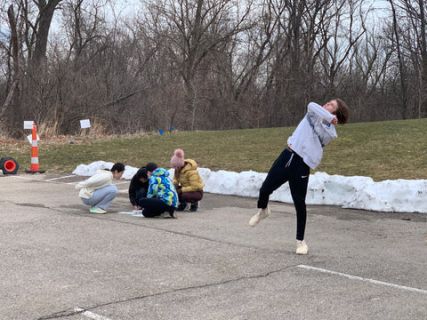 Any funny stories to share from the lesson?
Any funny stories to share from the lesson?
One of the students threw a ball so high that it went onto the roof of our gym. It’s still there because we don’t have a ladder high enough to get it down!
How is Steiner School different from other schools?
Something that sets Steiner (a Waldorf school) apart is that we work hard to meet students where they are developmentally. This means that in the preschool years the students’ time is primarily spent playing, to develop a healthy imagination, body and senses, as well as doing meaningful and fun work such as cooking and baking. They also hear many stories to foster the formation of mental pictures which later supports reading comprehension. In the lower grades the students transition from a more movement-based curriculum to learning about nature, cultures and sciences primarily through stories to which they connect deeply. The upper grades and high school are where the curriculum shift to more deeply intellectual topics and conversations around culture, literature and the sciences. Throughout our school the students are given a balanced curriculum including subjects lessons, arts, music and movement. Our student-centered approach also cultivates and establishes substantial relationships and helps develop social skills and moral character, as well as, offering a college-prep education.
How do you keep your students engaged in a tech-heavy world?
Something that sets Steiner apart is that we base our science lessons on experiences instead of textbooks or videos. In our science classes, students always start with hands-on experiences. Therefore, the sciences lessons begin in the laboratory and in the field. Observation and experimentation of the phenomena is the basis for the development of the laws and theories of modern science. The result is that we are educating the students to think and discover for themselves, which will serve them particularly well in the sciences but will also be beneficial no matter what their future career will be.
Favorite memory as a teacher:
I love seeing the growth of the students from 9th grade through 12th grade. Students come to us in 9th grade, some with many worries and insecurities and others with an overabundance of confidence. They are often very social but can be lacking in organizational skills, responsibility and social compassion. They grow and change so much from 9th to 12th grade and develop into caring and compassionate young adults.
Favorite memory as a student:
I loved chemistry and physics classes as a student. I remember the day my physics teacher did a demonstration where two balls were simultaneously released from the same height. One was launched horizontally and the other was dropped vertically. I was shocked that they hit the ground at the same time. I really thought the one that was launched horizontally would have taken longer to hit the ground. In retrospect, I would have had a hard time believing my teacher if he told us they would hit the ground at the same time without showing us that demonstration. Instead of focusing on questioning the truth of the statement that they would land at the same time, seeing the demonstration first engaged and interested me, and caused me to focus on questioning why they landed at the same time.
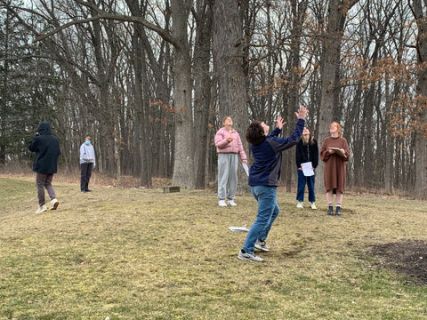 How do you Keep Life Fun with your students?
How do you Keep Life Fun with your students?
Because we start every topic with a demonstration or lab experience, the classes are naturally a lot of fun. The students enjoy hands-on learning. We also have engaging discussions in order to understand the phenomena that we investigate. The students enjoy sharing their thoughts and ideas, and it brings a social component to the lessons that would be absent if I was just lecturing. One day the students sat on scooters and raced through the gym to experience relative velocity. Another day I led them in an organized game of tug of war, an experience which led us to discuss vectors and the idea of equilibrium. There are so many examples of experiences the students have in the sciences, in chemistry, physics and the life sciences, throughout their four years in the high school. In their senior year the students travel to Maine as part of their Zoology lessons. We meet up with students from other Waldorf schools from across the country to study the coastal land and the abundance of life in the tide pools.
Did you have a favorite teacher when you were younger that inspired you to teach?
When I was in high school, I had no inclination to ever teach. I was very shy and wasn’t comfortable being in front of a room. My speech class in college was terrifying. I went to school to be an engineer and worked in the automotive industry for 13 years. Although I enjoyed my co-workers and many aspects of engineering work, I felt drawn to do something more meaningful. I’d had children by that point and had discovered the local Waldorf school. I was impressed by the curriculum and the way it built compassion, interest, imagination and logical thinking. Having spent 13 years in engineering, I could directly see the connections between the skills being built in the school and the skills needed for a successful career in engineering.
What inspired you to teach physics?
In order to truly understand a phenomenon, you have to understand it through your own experience. If someone were to give you a mathematical formula explaining motion, you might be able to understand the math, use it to calculate the position vs time, and even graph the motion. However, in order to truly make sense of the model you’d have to be able to connect it to your own experience. You’d have to be able to visualize the motion of the ball. It would be helpful to connect to your experience of throwing a ball straight up, or as far horizontally as you can. Through your own experience you already know and understand so much more than you realize. By connecting to that experience and then applying the math, you can understand the phenomena and the mathematical model that follows. Starting out of their own experience trains students to use their own experience to support their understanding. It also helps them to develop self-confidence as they realize the inherent knowledge they can tap into if they just take the time to recognize what they already fundamentally know to be true through their own experience. I wanted to teach physics in order to help students realize that they have the capacities to figure things out, and to give them experiences and practice doing so, in order to help them develop interest in the world and confidence in themselves.
Thanks to Noelle for taking the time to answer our questions and for sharing her story with us. We wish we were in her class!
Unplugged and Having Fun!
A TECH-FREE SUMMER MIGHT BE THE BEST SUMMER EVER!
The Importance of Play
Take a minute to think of a joyful childhood memory when you were engaged in play. Perhaps from summer camp or somewhere else. Where were you? Who was there? What were you doing? Was a smartphone involved? OK, now fast forward to today. Do you see kids playing in the same way you did as a child? Playing more? Playing less? Do your kids play as freely as you did as a child, with the same amount of supervision?
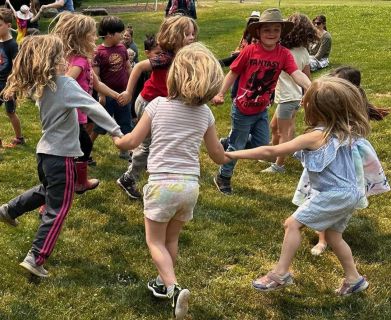
It’s no secret that kids love to play. When left to their own devices, kids can play all day in very creative ways. They make up stories, skits, games and songs. They immerse themselves in make-believe or lose themselves for hours in a book. Summer is an incubator of play, and there can be many unplanned moments of spontaneous play throughout the day. It’s a gift that cultivates joy. And, it’s also a critical pathway through which kids learn, grow, and develop into adults who can successfully navigate the world around them.
Child-directed play is important for social-emotional growth, developing social skills, and building strong friendships. It allows kids to explore social interactions in low risk situations. “Getting repeated feedback in a low-stakes environment is one of the main ways that play builds social skills”. When kids play together they learn to notice and interpret social cues, listen, take another person’s perspective, and share ideas and feelings in the process of negotiating and compromising. In his Ted Talk, The Decline of Play, psychologist Dr. Peter Gray further advocates for the importance of play. “Play is nature’s way of ensuring that …young human beings…acquire the skills that they need to develop successfully into adulthood”. When you allow your kids time for undirected play, they’re not only having fun, they’re cultivating tools that will support them in navigating life.
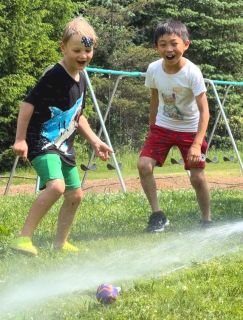 Watching a group of students playing in the sandbox, it is evident how play helps kids learn to collaborate. The kids will take on different roles. One digs channels with the shovel, and another gathers sand with a bucket. Some are in charge of detailing a structure, while others step back and plan the next expansion. When one student wants to change roles, they have to ask another to swap tools and positions. Sometimes changing roles requires negotiating how much longer each of them will continue in their current role before switching. If one doesn’t agree with another’s suggestion he or she might respond, “I don’t think that’s fair”, leading the others to consider what might feel fair to them. They nearly always find a compromise. In many ways, play is the antithesis of heavy social media use. The act of play places kids in situations where they are continually learning, connecting, increasing their empathy, trying new modes of social engagement, and have the time and space for observation and contemplation that help them process their social experiences.
Watching a group of students playing in the sandbox, it is evident how play helps kids learn to collaborate. The kids will take on different roles. One digs channels with the shovel, and another gathers sand with a bucket. Some are in charge of detailing a structure, while others step back and plan the next expansion. When one student wants to change roles, they have to ask another to swap tools and positions. Sometimes changing roles requires negotiating how much longer each of them will continue in their current role before switching. If one doesn’t agree with another’s suggestion he or she might respond, “I don’t think that’s fair”, leading the others to consider what might feel fair to them. They nearly always find a compromise. In many ways, play is the antithesis of heavy social media use. The act of play places kids in situations where they are continually learning, connecting, increasing their empathy, trying new modes of social engagement, and have the time and space for observation and contemplation that help them process their social experiences.
Free play also supports cognitive development, especially in younger children. It has been shown to increase neural connections in the brain (increasing pathways we use for critical thinking), build and strengthen the prefrontal cortex (the area of the brain responsible for decision-making, attention, problem-solving, impulse control, and planning), and support language skills. And while kids are playing, the absence of technology relieves the pressures of social media and actually helps kids sleep better. When humans view screens late at night they inevitably get less sleep, and they also lose out on the deep REM stage of sleep, which is critical for helping process and store events from the day into memory.
Today, our youth are spending less time engaging in self-directed play and more and more time on screens. A recent study found that in 2021, tweens (ages 8-12) spent about five and a half hours a day on screens, while teens (ages 13 to 18) spent about eight and a half hours a day on screens. Recent data released by the National Survey of Children’s Health found that in 2020 only 19.8% of school-aged children were physically active for at least one hour per day. How is this affecting our kids? And why is it essential to provide kids spaces where they can play and create together without the distractions of modern technology?
Social Media and Youth Mental Health
In 2007, Apple first released the iPhone and by 2012 had sold about 270 million units, equivalent to the population age 10 and older in the United States at that time. Translation - smartphones proliferated very quickly into modern society. And today there is a growing body of research that suggests heavy social media use is adversely impacting youth development.
According to Dr. Michael Rich, Associate Professor at Harvard Medical School, kids’ developing brains make it harder for them to limit their time on screens. Social media utilizes the same variable reward system that makes gambling so addictive. Unlike adults, a young person’s brain lacks a fully developed system of self-control to help them with stopping obsessive behavior. In a 2022 Pew Research Center study of American teenagers, 35% responded that they were using one of the top five social media platforms (YouTube, TikTok, Instagram, Snapchat, or Facebook) online “almost constantly”. And with the proliferation of smartphones and social media, rates of juvenile anxiety and depression have risen. From 2016 to 2020, researchers analyzing data from the National Survey of Children’s Health found that rates of anxiety and depression increased 29% and 27%, respectively, for children ages 3-17.
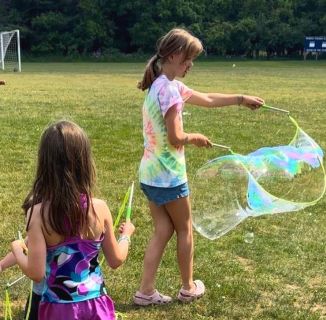 Dr. Jonathan Haidt, a social psychologist and Professor of Ethical Leadership at the NYU Stern School of Business, and Dr. Jean Twinge, Professor of Psychology at San Diego State University, have been compiling research about the links between social media and adolescent mental health. Through their work, they have found that many studies, using a variety of methods, suggest a strong link between heavy social media use and poor mental health, especially for girls.
Dr. Jonathan Haidt, a social psychologist and Professor of Ethical Leadership at the NYU Stern School of Business, and Dr. Jean Twinge, Professor of Psychology at San Diego State University, have been compiling research about the links between social media and adolescent mental health. Through their work, they have found that many studies, using a variety of methods, suggest a strong link between heavy social media use and poor mental health, especially for girls.
Haidt also notes that Instagram especially magnifies pressures for teens. “Social media—particularly Instagram, which displaces other forms of interaction among teens, puts the size of their friend group on public display, and subjects their physical appearance to the hard metrics of likes and comment counts—takes the worst parts of middle school and glossy women’s magazines and intensifies them”. Teens especially, can obsess over what they post on platforms like Instagram, “even when the app is not open, driving hours of obsessive thought, worry, and shame”.
Dr. Jenny Radesky, Assistant Professor at University of Michigan Medical School, focuses her research on the intersection of mobile technology and child development. Radesky (2018) surveyed a thorough study that suggests high-frequency digital media use is linked to an increase in new ADHD symptoms amongst teens, and researchers are also finding that heavy social media use leads to an increase in narcissistic behavior.
On a hopeful note, there is evidence that we get relief when we take a break from social media. Many experiments have shown that reducing or eliminating social media use for a week or more improves our mental health.
At Steiner, we understand that technology is a tool that our students will need in today's world. We recommend no technology for our youngest students and teach responsible use of it starting in middle school. Supporting this “slow-tech” approach, a break from technology has amazing value in helping kids understand and feel the benefits of spending time away from screens. As we end another school year and students have some much-needed free time, you might look for ways to preserve time for your children to play together without technology.
Education for an Unpredictable Future
Teens Feel Ready for College, But Not So Much for Work
A new poll found that 74 percent of high school students think they’ll have a job in 20 years that hasn’t been invented yet. How do schools prepare students for that future? In Waldorf education we focus on helping students develop creativity and problem solving skills, communication, teamwork, and empathy, as well as the ability to take their ideas and put them into practice in the real world. These skills are foundational, and prepare students to successfully navigate the unpredictable and rapidly changing world of work and the diverse paths to higher education.
This piece was originally published by Alyson Klein in Education Week
High schoolers believe that their educational experience is getting them ready for college. But they’re less certain that their coursework is preparing them for the world of work.
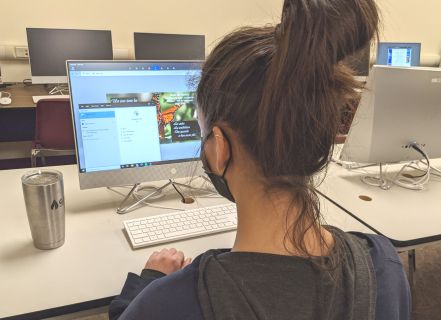
That’s one of the big takeaways from surveys published recently by the Ewing Marion Kauffman Foundation, a nonprofit philanthropy based in Kansas City, Mo. The survey found that 81 percent of students felt that high school got them “very” or “somewhat” ready for college, compared with just 52 percent who felt it prepared them for the workforce.
“People are coming out of this sort of either-or,” said Aaron North, the vice president of education at the Kauffman Foundation. “You’re going to college, or you’re not. You’re getting a job after high school or you’re not. I think that’s not reflective of the reality of what’s on the other side of that graduation stage for them.”
He expects that, in the future, many students will transfer in and out of the workforce, gaining both educational credentials and on-the-job experience.
The survey also found that students and adults in general expect that technology and computer science jobs will be a major growth industry, with 85 percent of adults and 88 percent of students saying they expect those gigs to be in “much” or at least “somewhat more” in demand in the next decade.
And 74 percent of students think they’ll have a job in 20 years that hasn’t been invented yet.
Students “have only grown up in an age of really accelerated tech evolution,” North said. “I think that’s just the world that they are in. It is a world of creation. It is a world of change.”
‘Practical Connection’ Needed
Overwhelmingly, students, parents, and employers surveyed thought high schoolers would be better off learning how to file their taxes than learning about the Pythagorean theorem. At least 82 percent of parents, students, and employers thought schools should focus more on the 1040-EZ form than on that fundamental concept in geometry.
And 81 percent of students said they thought high school should focus most closely on helping students develop real-world skills such as problem-solving and collaboration rather than focusing so much on specific academic-subject-matter expertise.
“I think what that highlights is this idea that there needs to be this practical connection between what and how you are learning when you’re in school and what happens when you’re not in school,” North said. “So that doesn’t mean it has to be directly related to your everyday life, but it does mean that there could be a balance between things that may be applicable to a very narrow number of fields and things that are highly applicable to your life no matter what field you go into or what path you choose.”
Employers are also more likely to rate employees highly if they have completed an internship in their industry and have technical certifications than if they only have a college degree, the survey found.
But at the same time, 56 percent of employers surveyed felt that someone with only a high school degree would be held back from success in life because of their education. Students were even more convinced of the benefits of college, with 63 percent saying that having only a high school education would be a roadblock to success.
Still, most adults—59 percent of those surveyed—said they can’t connect what they learned in high school to their current jobs. That’s especially true of workers in blue-collar jobs, 61 percent of whom say that their jobs weren’t relevant to their high school educations, compared with 52 percent of white-collar employees.
“Parents who have experienced a noncollege pathway understand that those pathways are viable and they can lead to really good options,” North said. “A huge percentage of our population ends up not getting a college degree. And so there are millions and millions of people out there navigating the nondegree world, without much of a road map, the kind of road map we’ve provided around college. So I think that’s reflective of people who have found that and are understanding that, whether it’s for themselves or for their own kids.”
Old Strategies, New Jobs
Similarly, a separate report released last week by the RAND Corp., found that the needs of the workforce have transformed dramatically thanks to technological changes, globalization, and demographic shifts. But K-12 schools, postsecondary institutions, and job-training organizations are preparing students for jobs using essentially the same set of strategies they’ve been relying on for decades.

At the same time, employers are struggling to find workers with so-called “21st-century skills” such as information synthesis, creativity, problem-solving, communication, and teamwork. Yet the path forward is not easy for workers looking to upgrade their skills because of automation or shifting consumer demands.
“Employers are saying they can’t find employees with the skills they need, and on the other end, you have workers whose jobs have been made less relevant,” said Melanie Zaber, an associate economist at RAND, a nonprofit research organization.
The blame shouldn’t be all on schools, the RAND report emphasizes. Employers and education and job-training institutions don’t do a great job of systematically sharing information with schools that would allow them to better prepare students for the changing needs of the workforce. Plus, funding for K-12 education isn’t equally distributed and often neglects the areas that need strong pre-career training the most.
What also makes progress difficult is that high school principals rarely get to see how their students are doing years after they leave the classroom, Zaber said. “Letting high school principals see what happens when students leave their doors can help inform policy for where the gaps are, where the barriers are, where students are being let down,” she said.
Waldorf Schools are Media Literacy Role Models
Waldorf education emphasizes thoughtful, intentional and developmentally appropriate technology use. We advocate for an experiential, relationship-based approach in early education, followed by a curriculum for older students that helps them understand tech as a tool, and engages them in conversations around digital ethics, privacy, media literacy, and balanced use of social media and technology. Our approach gives Waldorf graduates the tools and knowledge they need to be independent, creative, and ethical digital citizens. At Rudolf Steiner School of Ann Arbor, Cyber Civics is a required class in grades 6-8 and Computer Science and Programming are taught at the high school level.
This post was written by Soni Albright and originally published on cybercivics.com
As we celebrate Media Literacy Week… it’s hard to believe that Waldorf schools in North America have been leading the way when it comes to Media Literacy education.
What’s that? Waldorf schools and “Media” Literacy?
Do you mean those schools that are notoriously low-tech, and focus on things like face-to-face communication, hands-on learning, the great outdoors, and an art/music/movement integrated curriculum?
Yep, those schools!
Cyber Civics was founded at a public charter Waldorf school —Journey School—in 2010. Since its inception, most Waldorf schools (private and public) in North America, and many more internationally, have adopted the Cyber Civics program in their schools, and the vast majority have been teaching the lessons—which include digital citizenship, information literacy, and media literacy— since 2017.
Fast forward to 2021. The United States and most of the world is just now talking about the ‘need for digital citizenship’ and the importance of ‘educating our youth’ about media use, misinformation, balance and wellness and, most importantly, how to use tech ethically and wisely.
People worldwide are asking themselves “How do we control this Pandora’s Box after the pandemic? What can we do to help our kids help themselves in the digital landscape?”
All the while, Waldorf schools have been quietly holding this conversation with intentionality and patience: asking families to be thoughtful, mindful, discerning, and slow with media access for children. Not to deprive them, but rather to give children the gift of childhood—the endless opportunities that come with downtime, boredom, and unscheduled freedom. To favor face-to-face interactions over abstract experiences. To work on self-regulation, problem solving, physical movement, and social-emotional regulation.
By the time Waldorf students get to middle school, even though many aren’t using digital media at the same level as average kids their age, most are participating in weekly Cyber Civics lessons ranging from simple concepts such as what it means to be a citizen in any community and how to apply that to the digital world to more advanced topics such as: privacy and personal information, identifying misinformation, reading visual images, recognizing stereotypes and media representations, and ethical thinking in future technologies.
While many middle school students know their way around the device / app / platform, they haven’t been trained much in ethics, privacy, balance, and the decision-making aspects actually needed to survive and thrive in the digital age during adolescence.
We are so grateful for all the Waldorf schools that recognized the need for this important curriculum years ago, and who have grown with us over the years. We have learned with you, about our young people and what they need from us as examples and digital citizens.
Thank you for paving the way for this curriculum to be brought to so many other schools and community groups beyond the Waldorf sphere—public and private schools... Catholic, Hebrew, Montessori, and more.
And please take a bow for being the Media Literacy role models the world so desperately needs.
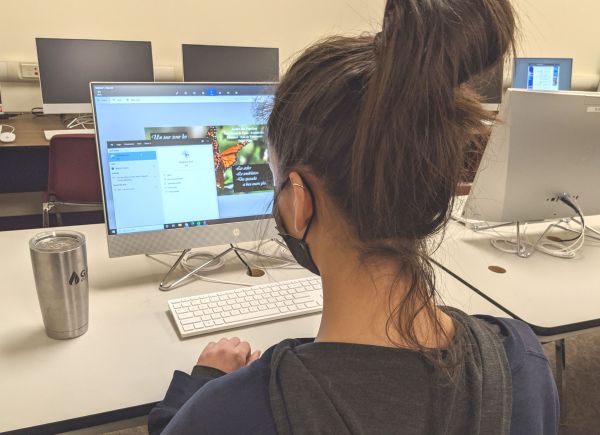
How Outdoor Learning Affects Students
A recent study focusing on children aged 5 to 18 revealed that outdoor education and activities have a multitude of benefits for students. Not only did students exhibit higher levels of self-confidence, stronger friendships, and a greater sense of belonging, but academic performance in math, science, and language also saw an improvement, coupled with increased motivation to learn. Waldorf education places significant value on diverse forms of outdoor learning and experiences, such as scientific observation and environmental projects, camping, field trips, and free exploratory play.
This article was originally published on Children & Nature Network.
Effects of regular classes in outdoor education settings: A systematic review on students' learning, social and health dimensions
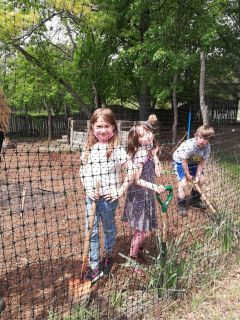
during a gardening class.
Regular classes in outdoor settings can promote students’ learning, health, social development, and concern for the environment
This systematic review of the literature was conducted (1) to identify studies about compulsory school- and curriculum-based outdoor education programs (OEPs) for students aged 5-18, (2) to categorize and evaluate outcomes, (3) to assess the methodological quality of the studies, and (4) to discuss possible benefits of such programs for students. The OEPs included in this review offered regular weekly or bi-weekly classes in a natural or cultural environment outside the classroom for at least four hours per week over a period of at least two months. In these programs, the outdoor learning was an embedded component of the school’s curriculum. Only studies reporting at least one student outcome and published in English- and German-language peer-reviewed journals were included.
Only thirteen studies met the inclusion criteria, indicating that the current state of research on OEPs is relatively small. The goals, participant groups, learning environments, methods used and reported outcomes differed widely across the programs. The methodological quality of the studies was, on average, moderate. Eight studies reported outcomes in terms of social dimensions, seven in learning dimensions, and four in additional outcomes. Two studies in the “additional outcomes” category reported on students’ physical activity, one on students’ mental health, one on action regulation behavior, and one on students’ environmental attitude and behavior.
Social outcomes included improved social competencies and social relations, such as self-esteem, self-confidence, trusting relationships, and the sense of belonging. Learning outcomes included improved academic performance in several subjects and improved skills in transferring the knowledge gained to real life situations. Two studies reporting learning outcomes also reported possible benefits relating to learning motivation. The research on physical activity, mental health and action regulation behavior was underrepresented in comparison to results in learning and social dimensions. The study reporting mental health outcomes found a significant decrease in mental health problems for boys but not for girls. One study reported growth in students’ self-confidence, leading them to take active responsibility for the environment.
The overall results of this review indicate that regular compulsory school- and curriculum-based OEPs can promote students’ social, academic, physical and psychological development. Further research is needed, however, to support what this review reports as “tendencies” in relation to the reported outcomes. The authors recommend more quasi-experimental and longitudinal studies with a greater number of participants and high methodological quality.
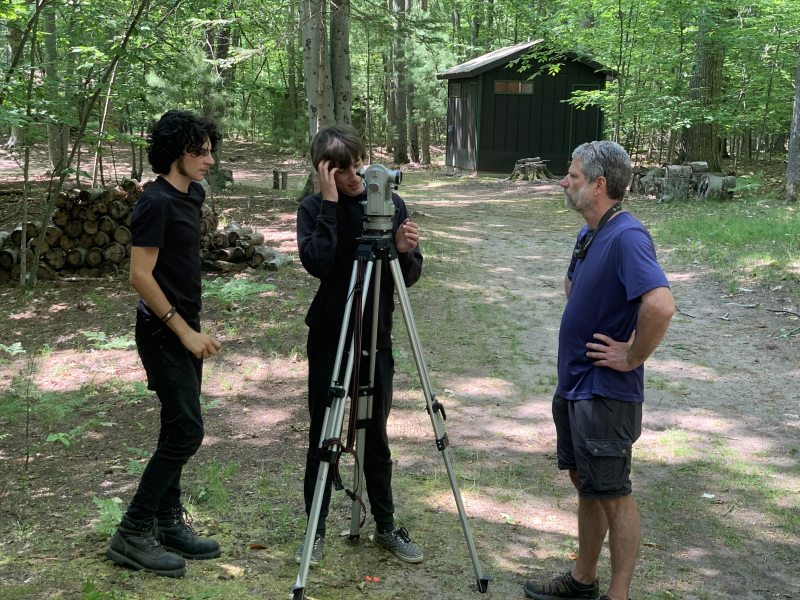
History Through Architecture
History through Architecture is a culminating course in the K-12 journey of Waldorf Education. It is a sweeping survey that traces the development of human consciousness over millennia from the earliest times to the present, including speculations about what the future may hold for our collective lives on Earth. Through this year’s special block, our 12th Graders explored their unique places in the long line of other human beings who have come before them. They began to see themselves with new eyes as they related to the larger human story.
The vehicle for their experience is what we call Architecture…a kind of “memory chip” that holds a rich tapestry of data points logged from all aspects of humanity – iconic facets that have imbued the “bricks-and-mortar” of buildings, cities, landscapes and human-made systems with the zeitgeist or spirit of the age in which they were manifested. Specific teachings in this block have been artfully designed to showcase how human ingenuity advanced with each succeeding generation. New ideas imaginatively evolved to produce structures, materials, energy and metaphysical awareness that created all our structures from simple barrow mounds of earliest human settlements to the soaring skyscrapers of our modern world. All of them imbued with an inner force – a seeking for higher awareness – what we term today a “spiritual experience”.
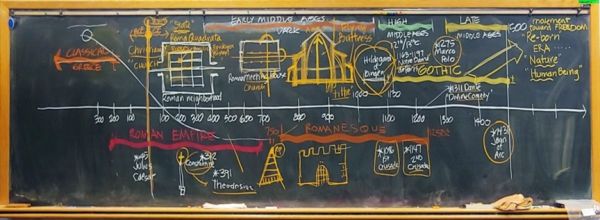
Colorful, hand-drawn chalkboards of chronological, step-by-step timelines showed how passive and dynamic forces of compression and tension moved across time to shape clay, stone, brick, metal, glass and myriad other materials and processes into the infinitely varied forms that we see in our material world. Concepts of “boundary” and “monument” drove the construction of fences, walls for protection from weather and wild animals, but also marked personal identity – whether for an individual or for tribes and clans, where the “I” became a “we”.
 The students hand drew and wrote the salient points of the block into their Main Lesson books. Applying their innate Creativity and Imagination, they recorded the content of their learning. Some exercises were given to demonstrate how historic structures could be shown in plan, section and in three dimensions for learning how buildings are represented.
The students hand drew and wrote the salient points of the block into their Main Lesson books. Applying their innate Creativity and Imagination, they recorded the content of their learning. Some exercises were given to demonstrate how historic structures could be shown in plan, section and in three dimensions for learning how buildings are represented.
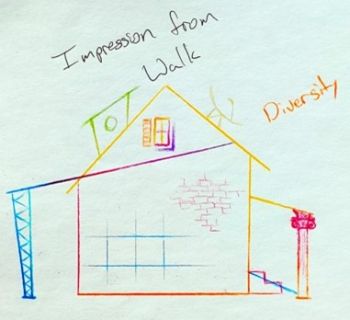 Other exercises engage the students’ personal observations and imaginations. For example, an “Impression/Expression” exercise was assigned for an outside walk taken through the Pontiac Trail neighborhood during one class period. Each student observed a particular perception along the way (a house, a tree, the rhythm of structures, a door or window detail, etc.) that impressed them. Returning to school, some form of expression was made from memory that described the nature of the student’s experience.
Other exercises engage the students’ personal observations and imaginations. For example, an “Impression/Expression” exercise was assigned for an outside walk taken through the Pontiac Trail neighborhood during one class period. Each student observed a particular perception along the way (a house, a tree, the rhythm of structures, a door or window detail, etc.) that impressed them. Returning to school, some form of expression was made from memory that described the nature of the student’s experience.
We contrasted challenging Thinking of the block’s first week with a Clay Handwork exercise that explored the curved line under the force of compression that freed the student’s imagination.
In the second week, Wooden Sticks Handwork created a new experience reflecting the advent of the straight-line forces of tension in history that led to developing open-structured trusses.

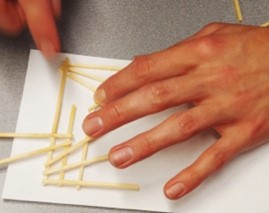

Toward the end of the block, after experiencing the great diversity of human structures built throughout history, students were given a final project where they were asked to design their own “architecture”. The day the assignment was given, this year’s Seniors immediately jumped into action, eagerly discussing possibilities and ideas for their individual or group to develop.
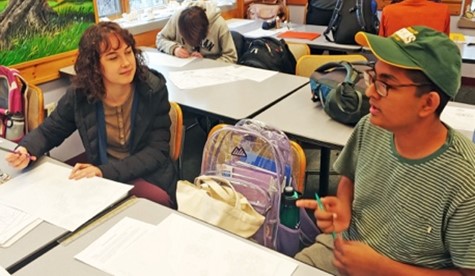 Over several days, students collaborated, talking and sketching ideas until a final design became clear. Every student prepared a statement, drawings, or a model to describe their vision. They then stood before their classmates and presented unique designs which inspired thoughtful questions and comments. This process of inner creativity - manifesting into outer forms -teaches lessons that will serve our Seniors as they venture out into the wider world to pursue their dreams in coming years.
Over several days, students collaborated, talking and sketching ideas until a final design became clear. Every student prepared a statement, drawings, or a model to describe their vision. They then stood before their classmates and presented unique designs which inspired thoughtful questions and comments. This process of inner creativity - manifesting into outer forms -teaches lessons that will serve our Seniors as they venture out into the wider world to pursue their dreams in coming years.
It is a great joy for me to witness the various revelations that unfold through each 12th Grader as they come to know themselves more deeply in the History through Architecture block.
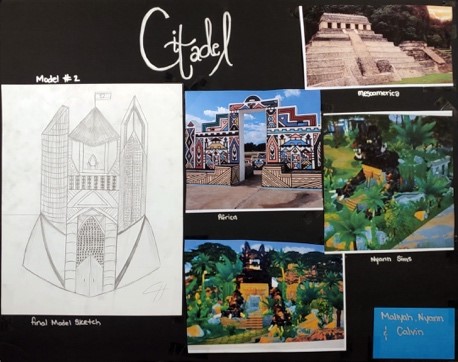

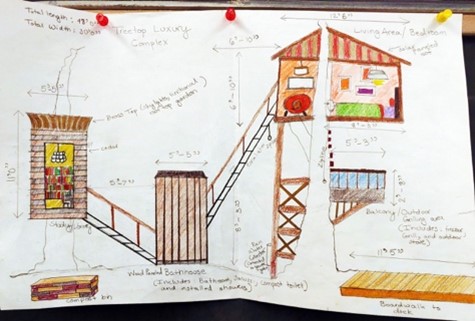
Adaptability Quotient: Educating for an Uncertain Future
With increasingly rapid changes in the nature of work, employers are interested not just in intelligence and social skills, but in an employee’s adaptability quotient–their ability to adjust to new challenges with flexibility, curiosity, courage, resilience, and problem-solving skills. In Waldorf education, we deepen rigorous academics by integrating art, outdoor education, music, theater, practical work, movement and hands-on learning. The depth and breadth of the Waldorf curriculum challenges students and develops crucial capacities that will help them adapt and thrive throughout their lives.
.jpg/Surpassing_Stem(1)__600x450.jpg)
This article was originally published Seb Murray on BBC.com
As workplaces change, is it enough to be smart? Enter AQ, the capacity to adapt that may well determine your future career success.
Once, if you wanted to assess how well someone might do climbing the career ladder, you might have considered asking them to take an IQ test. For years, it was thought that the intelligence quotient (IQ) test – which measures memory, analytical thinking and mathematical ability – was one of the best ways to predict our future job prospects.
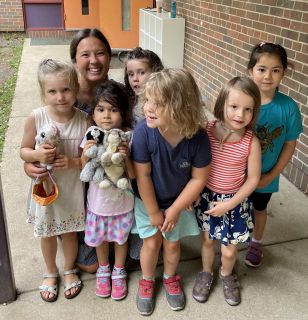 More recently, there has been increased attention on emotional intelligence (EQ), broadly characterized as a set of interpersonal, self-regulation and communication skills. EQ is now widely seen as a tool kit that plays an important role in helping us succeed in multiple aspects of life. Both IQ and EQ are considered important to our career success. But today, as technology redefines how we work, the skills we need to thrive in the job market are evolving too. Enter adaptability quotient, or AQ, a subjective set of qualities loosely defined as the ability to pivot and flourish in an environment of fast and frequent change.
More recently, there has been increased attention on emotional intelligence (EQ), broadly characterized as a set of interpersonal, self-regulation and communication skills. EQ is now widely seen as a tool kit that plays an important role in helping us succeed in multiple aspects of life. Both IQ and EQ are considered important to our career success. But today, as technology redefines how we work, the skills we need to thrive in the job market are evolving too. Enter adaptability quotient, or AQ, a subjective set of qualities loosely defined as the ability to pivot and flourish in an environment of fast and frequent change.
“IQ is the minimum you need to get a job, but AQ is how you will be successful over time,” says Natalie Fratto, a New York-based vice-president at Goldman Sachs who became interested in AQ when she was investing in tech start-ups. She has subsequently presented a popular TED talk on the subject. Fratto says AQ is not just the capacity to absorb new information, but the ability to work out what is relevant, to unlearn obsolete knowledge, overcome challenges, and to make a conscious effort to change. AQ involves flexibility, curiosity, courage, resilience and problem-solving skills too.
Amy Edmondson, a professor of leadership and management at Harvard Business School, says it is the breakneck speed of workplace change that will make AQ more valuable than IQ. Technology has vastly changed how many jobs are done, and the disruption will continue – over the next three years, 120 million people in the world’s 12 largest economies may need to be reskilled because of automation, according to a 2019 IBM study.
Any roles that involve spotting patterns in data – lawyers reviewing legal documents or doctors making a patient diagnosis, for example – are easy to automate, says Dave Coplin, CEO of The Envisioners, a UK-based technology consultancy. This is because an algorithm can do these tasks faster and more accurately than a human, he says. To avoid obsolescence, workers doing these jobs need to develop new skills like creativity to solve new problems, empathy to communicate better and accountability, using human intuition to supplement insight from machines. “If an algo can do 30% of the tasks that I used to do, what can I do with that spare capacity? The winners are those who choose to do things that algos can’t.”
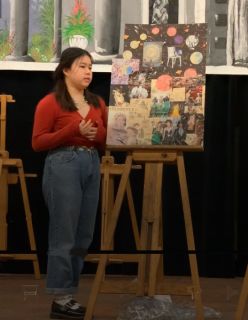 Edmondson says every profession will require adaptability and flexibility, from banking to the arts. Say you are an accountant. Your IQ gets you through the examinations to become qualified, then your EQ helps you connect with an interviewer, land a job and develop relationships with clients and colleagues. Then, when systems change or aspects of work are automated, you need AQ to accommodate this innovation and adapt to new ways of performing your role.
Edmondson says every profession will require adaptability and flexibility, from banking to the arts. Say you are an accountant. Your IQ gets you through the examinations to become qualified, then your EQ helps you connect with an interviewer, land a job and develop relationships with clients and colleagues. Then, when systems change or aspects of work are automated, you need AQ to accommodate this innovation and adapt to new ways of performing your role.
All three quotients are somewhat complementary, since they all help you to solve problems and therefore adapt, Edmondson says. An ideal candidate possesses all three, but not everyone does. “There are rigid geniuses,” she says. Having IQ, but no AQ would leave you struggling to embrace new ways of working using your existing skills – and low AQ makes it harder to acquire new ones.
AQ is now increasingly being sought at the hiring level. According to the IBM study, 5,670 executives globally rated behavioral skills as most critical for the workforce today, and chief among them was the “willingness to be flexible, agile and adaptable to change”. Will Gosling, Deloitte’s UK human capital consulting leader, says there’s no definitive method of measuring adaptability like an IQ test, but companies have woken up to AQ’s value and are changing their recruitment processes to help identify people who may be high in it.
Deloitte has started using immersive online simulations where job candidates are assessed on how well they adapt to potential workplace challenges; one assessment involves choosing how you would encourage reluctant colleagues to join a company triathlon team. Deloitte also looks to hire people who have shown they can perform in different functions, industries or geographies. “This proves they are agile and a fast learner,” Gosling says.
Fratto of Goldman Sachs, meanwhile, suggests three ways AQ might manifest in potential candidates: if they can picture possible versions of the future by asking “what if” questions, if they can unlearn information to challenge presumptions and if they enjoy exploration or seeking out new experiences.
She says this is not a definitive recipe for AQ, but recruiters should pose these kinds of questions to tease out evidence of AQ in candidates. In fact, she puts them to founders of start-ups seeking her investment.“Start-ups go through evolutions,” she explains. “It’s not like the founder has a written job description; they need some of a fluctuating list of 30 or 50 skills to be successful.”
One good thing about AQ is that – even if you can’t measure it – experts say you can work to develop it. Penny Locaso, the Australian founder ofBKindred, an education companythat helps people to become more adaptable, says some people have more curious or courageous personalities, which may explain why they are naturally better at adapting than others. “However, if one does not continue to surf the edge of their discomfort, the adaptability you are born with could decrease over time.”
She suggests three ways to boost your adaptability: first, limit distractions and learn to focus so you can determine what adaptations to make. Second, ask uncomfortable questions, like for a pay rise, to develop courage and normalize fear. Third, be curious about things that fascinate you by having more conversations rather than Googling the answer, something “which wires our brains to be lazy” and diminishes our ability to solve difficult challenges.
Otto Scharmer, a senior lecturer at the MIT Sloan School of Management who has written books on learning from the emerging future, suggests other methods. In a TED talk, he recommends remaining open to new possibilities, trying to see a situation through someone else’s eyes and reducing your ego so that you can feel comfortable with the unknown.
One thing we do know is that the workplaces of the future will operate differently. We may not all be comfortable with the pace of change – but we can prepare. As Edmondson says: “Learning to learn is mission critical. The ability to learn, change, grow, experiment will become far more important than subject expertise.”
School Trips as a Rite of Passage
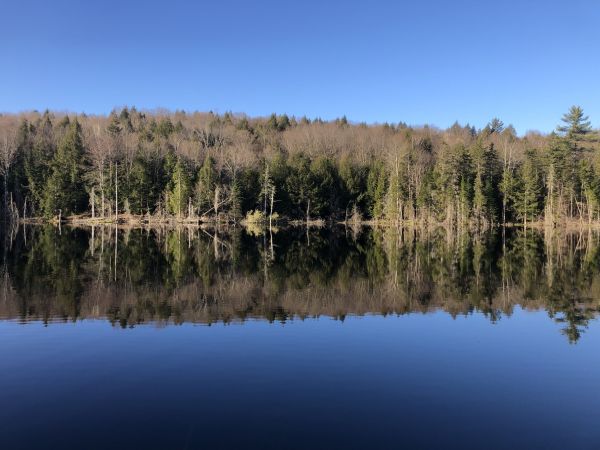
Our 8th grade class recently returned from its annual class trip, a 10-day wilderness adventure in New England. This 8th grade trip is a rite of passage for students, the culmination of progressively longer and more adventurous excursions undertaken by the class teachers and students over the years.
At Rudolf Steiner School of Ann Arbor, we strongly believe these class trips are a vital part of the student experience. They foster a connection with the outdoors, offer opportunities for teamwork and class camaraderie, give some students an experience they might otherwise never have, and teach responsibility and self-knowledge. They also provide moments of joy, life-long memories, and shared experiences that further cement the bonds among the students.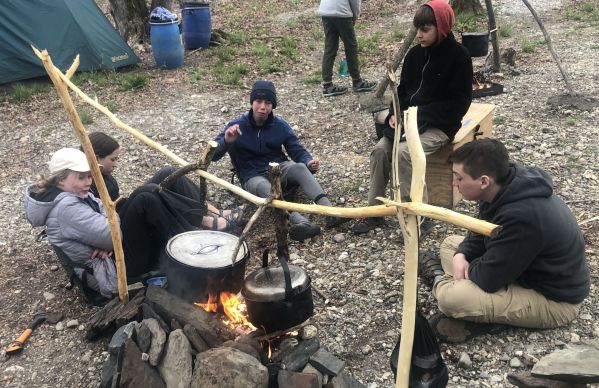
Typically, a class’s first overnight trip takes place in 3rd grade, where the class spends a night at a farm. This supplements the in-class work of 3rd grade, where students learn about farming, shelters, and ways people have lived and survived throughout history. By the time they reach middle school, the students have been on several overnight trips. In the middle grades, they spend a few nights in a dark-sky area as part of their astronomy studies and travel to Hocking Hills, Ohio, to further their lessons in mineralogy and geology.
The 8th grade trip is a wilderness adventure experience. RSSAA has generally used two organizations to help us with this experience: the Northwaters & Langskib camp based out of Temagami, Ontario or Kroka Expeditions, based out of Marlow, N.H. Each offers a program of canoeing and camping that challenges the students physically; requires them to work together to set up camp, cook food, clean dishes, take care of the canoes, etc.; and provides an opportunity for self-reflection, community sharing, and social and emotional growth. These trips are usually undertaken at the start of the school year, or even before the school year officially begins, as they are an excellent way to launch the class into their last year together before high school.
As an 8th grader teacher, I have experienced both the Northwaters and Kroka experiences — both were incredible and so important for my students. Last year, my class went to Kroka and paddled down the Battenkill River from Vermont to New York — the same path taken by this year’s group of 8th graders. My class enjoyed the challenges posed by canoeing along a swift-moving river — we had to navigate rapids, hairpin turns, fallen trees, lots of rocks, and ever-changing water depths. Despite the challenges, there is little to compare to the feeling of navigating your way down an isolated, scenic river, seeing birds and other wildlife on the shores, discovering the best place to pitch a tent, staring a fire and making food for your class, and chatting with friends by the fire as the stars emerge.
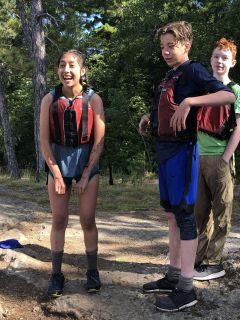 As is the intent of a rite of passage, when a class returns to school following these trips it is evident how much the students have grown, both as individuals who confronted and overcame their own personal challenges on the trip, and as a group who discovered strengths and vulnerabilities in their classmates they never knew before and who return with a shared experience that belongs only to them. Each year there is inevitably a student or two who do not want to take on the expected rigors of the trip, but upon return they are always glad they did and many say they now feel like they could accomplish anything!
As is the intent of a rite of passage, when a class returns to school following these trips it is evident how much the students have grown, both as individuals who confronted and overcame their own personal challenges on the trip, and as a group who discovered strengths and vulnerabilities in their classmates they never knew before and who return with a shared experience that belongs only to them. Each year there is inevitably a student or two who do not want to take on the expected rigors of the trip, but upon return they are always glad they did and many say they now feel like they could accomplish anything!
While the 8th grade trip is in many ways the culmination of these experiences in the grades and middle school, these types of trips continue for students at our high school. Ninth graders end their freshman year with a week at the Community Farm of Ann Arbor, while 10th graders take the knowledge they learned during their sophomore year for a week-long land surveying expedition at Camp Lookout on the northern shores of Lake Michigan. Seniors wrap up their RSSAA journey with two amazing adventures: a Zoology trip to Hermit Island, Maine, where they explore the flora and fauna of the ocean and tidal pools; and an adventure in Venice, Florence, and Rome, where they explore the artists, writers, and thinkers they learned about in the classroom for so many years.
These trips are a cherished and important part of our curriculum. I believe they play a central role in helping our graduates to be well-rounded citizens of the world, with the self-confidence to take off on their own life adventures.
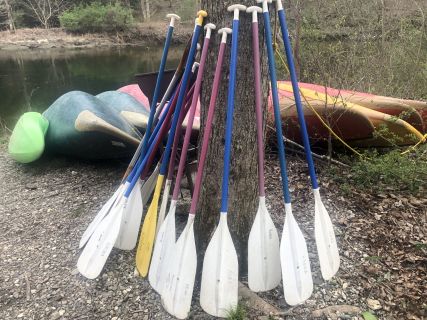
Is Travel Good For Teens?
Is it safe? Will they make good choices? What if something happens? Will they meet nice people?
These are just a few of the questions that might pop up when considering allowing your teen to travel - and they're all valid and worthy of discussion. But a question that might be even more important is, what will they learn? For parents, the educational aspect of travel is most likely the biggest reason why they send their kids on an overseas educational program with their school, like our senior trip to Italy. But what about travel with non-school groups - or even solo travel - for teens?
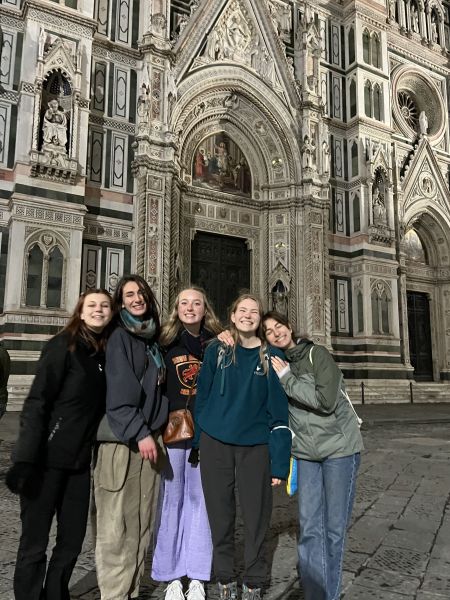
Traveling is the moment when the textbook comes alive, when everyday objects look completely different and when common greetings sound exotic. For teens, traveling abroad is exhilarating, stimulating, frustrating and—whether they're looking for it or not—extremely educational. Experts say that the educational benefit for teens goes far beyond learning historical facts, architectural styles, conversational phrases and even a working knowledge of a foreign subway system. Travel is an excellent way for students to develop the vital skills like critical thinking and problem solving that will enable them to compete in an increasingly globally interdependent economy.
“I think the biggest thing travel does for teens is to help them to see beyond their own somewhat limited world and to see how other people live,” says Christine Schelhas-Miller, who taught adolescent development at Cornell University for many years and is the co-author of Don’t Tell Me What to Do, Just Send Money: The Essential Parenting Guide to the College Years.
Travel is particularly good for developing critical thinking as it forces teens to examine their own values and beliefs from the perspective of a different culture. They become aware of aspects of their lives that they have taken for granted and never examined. - Christine Schelhas-Miller
Improvement in critical-thinking skills can translate into big gains in the classroom. Travel can help students develop all of what educators call the 4 Cs (critical thinking and problem solving, communication, collaboration, and creativity and innovation), says Dr. Jessie Voigts, who has a PhD in international education and runs wanderingeducators.com, a global community of educators sharing travel experiences.
“Travel encourages critical thinking (especially when comparing intercultural differences), problem solving (in so many ways—money, transportation, food, events, cultures, languages, etc.) and communication (both verbal and non-verbal, which is key to any communication event, globally),” says Voigts, author of Bringing the World Home: A Resource Guide to Raising Intercultural Kids. "It also encourages collaboration (working together with your travel partners or locals to fulfill your basic needs), creativity (finding a creative solution to a travel problem) and innovation (whether it’s a way to hold your luggage together with whatever is on hand or finding a new route in an unfamiliar town past a parade to get where you need to go).” And, through these experiences, teens are becoming more flexible and adaptable along the way, two more skills that are essential in the 21st Century’s virtual workplace.
Our kids face an entirely different world than that of their parents and grandparents. They need more than school and college to get a job. They need to learn flexibility, adaptability, and other skills to succeed in today’s global economy. Our coworkers and neighbors are no longer just next door, but all around the world.
Traveling—not just being a tourist, but smart travel—helps teens learn flexibility and adaptability, and creates an open-minded worldview that allows teens to work well with others anywhere in the world.” - Dr. Jessie Voigts
It may take teens—and their parents—some time to realize that they have gained all of these skills from their travels abroad. But it probably won’t take anyone long to figure out that these teens have learned a lot about something very close to home: themselves. Unexpected events always happen to travelers and, when faced with these events without an adult to guide them, teens develop problem-solving skills and confidence in their abilities to manage their lives. When teens travel, they expect to learn so much about the other country, but may also make some important self-discoveries along the way.

Some Life Benefits of Traveling as a Teenager:
- Learn How to Save and Budget Money - Sure, learning about money starts at a young age, but there is real-life experience and deferred gratification in saving up all school year for an extended trip that a teen can proudly say that they paid for. Plus there's the skill of budgeting throughout the trip.
- Ability to Make an Itinerary - Itineraries are just as dynamic as the places visited and this will reflect upon your teens travels no matter where they venture. They'll build flexibility when they need to make and change their itinerary so they can have the best experience possible.
- Build Problem-solving Skills - World travel wouldn’t be complete without the occasional bump in the road. Dealing with problems like pouring rain when the forecast predicted sun or a broken suitcase zipper will make them a savvy problem-solver as they work through predicaments proactively and positively rather than allowing them to spoil the trip.
- Become an Independent and Responsible Young Person - When traveling around with family and friends, it’s super easy to follow their lead and let others take care of things like tickets, transportation, meals, itineraries, etc. – The list goes on and on. Traveling without the familiarity of people from home means your teen will need to take more responsibility for their own actions, as well as look out for those they are with. This means showing up prepared, making the effort to participate, and being accountable throughout the trip.
- Break Stereotypes and Experience New Cultures - Unfortunately, people are often quick to believe stereotypes about other countries and their cultures, especially the negative ones. This is true of Americans' views of overseas destinations, as well as other countries negative perceptions of Americans. When traveling, your teen will have the opportunity to break this cycle by keeping an open mind and an open heart and sharing everything that it means to be a global citizen.
While every family and every teen is unique, when it comes to travel it's possible the pros outweigh any cons. Traveling teaches meaningful life skills, provides an opportunity to meet new people, facilitates cultural appreciation, and teaches the ability to adapt to new environments. Travel is a fantastic way of gaining these unique experiences which develop youth into more well-rounded citizens, all while having fun along the way!
